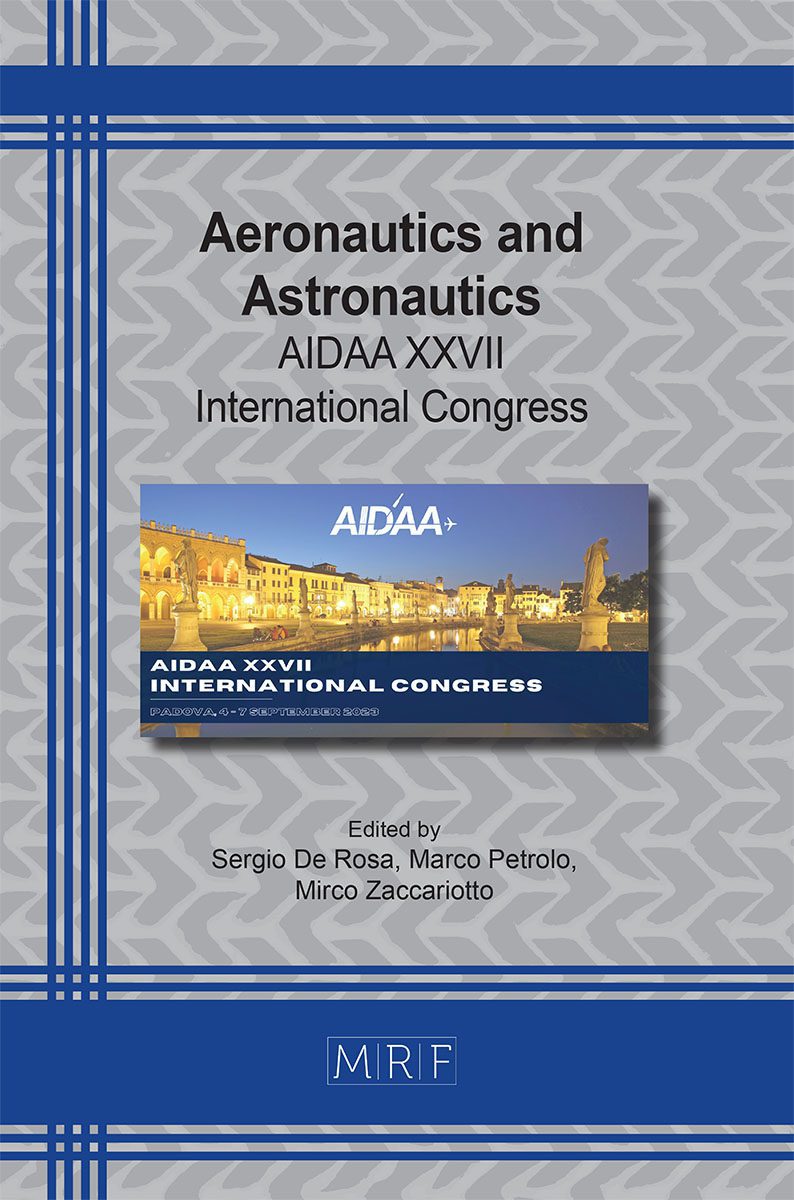Ascent trajectory of sounding balloons: dynamical models and mission data reconstruction
C. Bettanini, M. Bartolomei, A. Aboudan, L. Olivieri
download PDFAbstract. Small sounding balloons are a fast and cost-effective transport system to lift up scientific payloads up to stratospheric burst altitudes below 40 kilometres; during ascent and descent phase dedicated instruments may be operated to monitor atmospheric parameters and optical payloads may be used for remote observation. This work will focus on the reconstruction of the trajectory of the ascent phase, which is the longest and dynamically less perturbed part of the flight; in this section the dynamics of the flight system is determined by the lift of the balloon guiding the vertical motion and the local winds controlling the horizontal motion. The presented reconstruction algorithm is based on a linear quadratic estimation predictor corrector using the standard equations of motions in ECEF system to propagate the simulation and the measurement of the on-board sensors (triaxial accelerometer, GPS, pressure and temperature sensors) to correct the estimation and reduce the uncertainty in the reconstruction, which is mainly related to the value of balloon canopy drag coefficient Cd, the lifting gas volume and local wind perturbations. Two different balloon flights, both launched within a joint effort between teams by University of Padova and University of Pisa, are considered: one conducted during daytime, the other in night time. The different environmental conditions and in particular the different temperature evolution within the lifting balloon in the day flight due to Sun heating provide a good proving ground to investigate sensitivity of algorithm to environmental conditions. The prediction of flight dynamic models implementing horizontal and vertical equations of motion are compared with real mission data acquired by on board systems, highlighting the influence of local perturbations on the foreseen ascent trajectory.
Keywords
Sounding Balloon Dynamics, Trajectory Reconstruction, Linear Quadratic Estimation Method
Published online 11/1/2023, 6 pages
Copyright © 2023 by the author(s)
Published under license by Materials Research Forum LLC., Millersville PA, USA
Citation: C. Bettanini, M. Bartolomei, A. Aboudan, L. Olivieri, Ascent trajectory of sounding balloons: dynamical models and mission data reconstruction, Materials Research Proceedings, Vol. 37, pp 274-279, 2023
DOI: https://doi.org/10.21741/9781644902813-60
The article was published as article 60 of the book Aeronautics and Astronautics
![]() Content from this work may be used under the terms of the Creative Commons Attribution 3.0 license. Any further distribution of this work must maintain attribution to the author(s) and the title of the work, journal citation and DOI.
Content from this work may be used under the terms of the Creative Commons Attribution 3.0 license. Any further distribution of this work must maintain attribution to the author(s) and the title of the work, journal citation and DOI.
References
[1] C. Bettanini, M. Bartolomei, P. Fiorentin, A. Aboudan and S. Cavazzani, “Evaluation of Sources of Artificial Light at Night With an Autonomous Payload in a Sounding Balloon Flight,” IEEE JOURNAL OF SELECTED TOPICS IN APPLIED EARTH OBSERVATIONS AND REMOTE SENSING, vol. 16, pp. 2318-2326, 2023. https://doi.org/10.1109/JSTARS.2023.3245190
[2] F. Toson, M. Pulice, M. Furiato, M. Pavan, S. Sandon, D. Sandu and R. Giovanni, “Launch of an Innovative Air Pollutant Sampler up to 27,000 Metres Using a Stratospheric Balloon,” Aerotecnica Missili & Spazio, vol. 102, no. 2, pp. 127-138, June 2023. https://doi.org/10.1007/s42496-023-00151-y
[3] L. W. Renegar, “A Survey of Current Balloon Trajectory Prediction Technology”. https://via.library.depaul.edu/cgi/viewcontent.cgi?referer=&httpsredir=1&article=1125&context=ahac
[4] A. Gallice, F.G. Wienhold, C.R. Hoyle, F. Immler and T. Peter “Modeling the ascent of sounding balloons: derivation of the vertical air motion”, Atmos. Meas. Tech., 4, 2235–2253, 201. https://doi.org/10.5194/amt-4-2235-2011
[5] Luke W. Renegar “Development of a Probabilistic Trajectory Model for High-Altitude Scientific Balloons”, University of Maryland, College Park
[6] H.D. Voss, N.A. Ramm and J. Dailey “Understanding High-Altitude Balloon Flight Fundamentals” , Proceedings of 3rd Annual Academic High-Altitude Conference
[7] C. Olsson,”Sensitivity Analysis for Ascending Zero Pressure Balloons”, Master thesis ,2019, Luleå tekniska universitet
[8] Q. Dai, X. Fang , X. Li, L. Tian, “Performance simulation of high altitude scientific balloons”, Advances in Space Research 49 (2012), 1045–1052. https://doi.org/10.1016/j.asr.2011.12.026
[9] F. Kreith , J.F. Kreider “Numerical Prediction of the Performance of High Altitude Balloons”, National Center for Atmospheric Research, Technical Note NCAR-TN/STR-65
[10] J. Söder, M. Gerding, A. Schneider, A. Dörnbrack, H. Wilms, J. Wagner and F. Lübken “Evaluation of wake influence on high-resolution balloon-sonde measurements”, Atmos. Meas. Tech., 12, 4191–4210, 2019. https://doi.org/10.5194/amt-12-4191-2019
[11] F.P. Camara, “Flight Dynamics of a High-Altitude Balloon,” Master Thesis , 2018, Universidad Carlos III, Madrid
[12] M. Tuveri, A. Ceruti, “Added masses computation for unconventional airships and aerostats through geometric shape evaluation and meshing”
[13] W.J. Anderson, G.N. Shah, J. Park “Added Mass of High-Altitude Balloons”, JOURNAL OF AIRCRAFT Vol. 32, No. 2, March-April 1995. https://doi.org/10.2514/3.46714
[14] G. J. Marlton “On the development, characterisation and applications of a balloon-borne atmospheric turbulence sensor” , Thesis Work, University of Reading, Department of Meteorology































